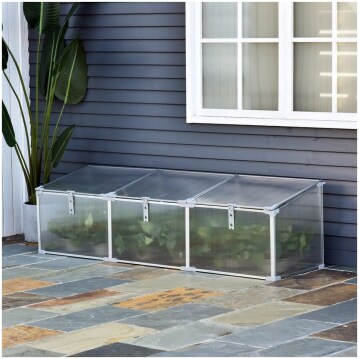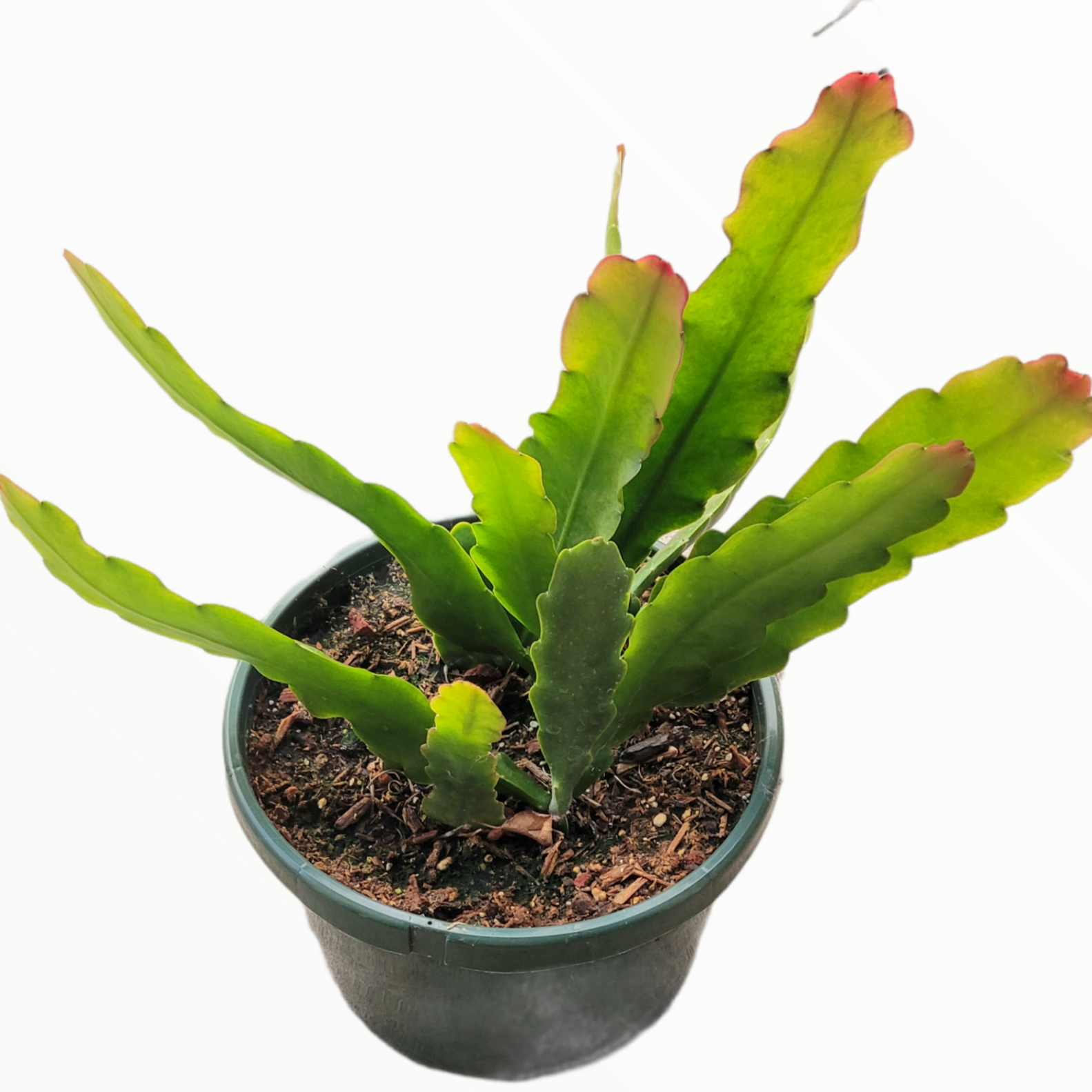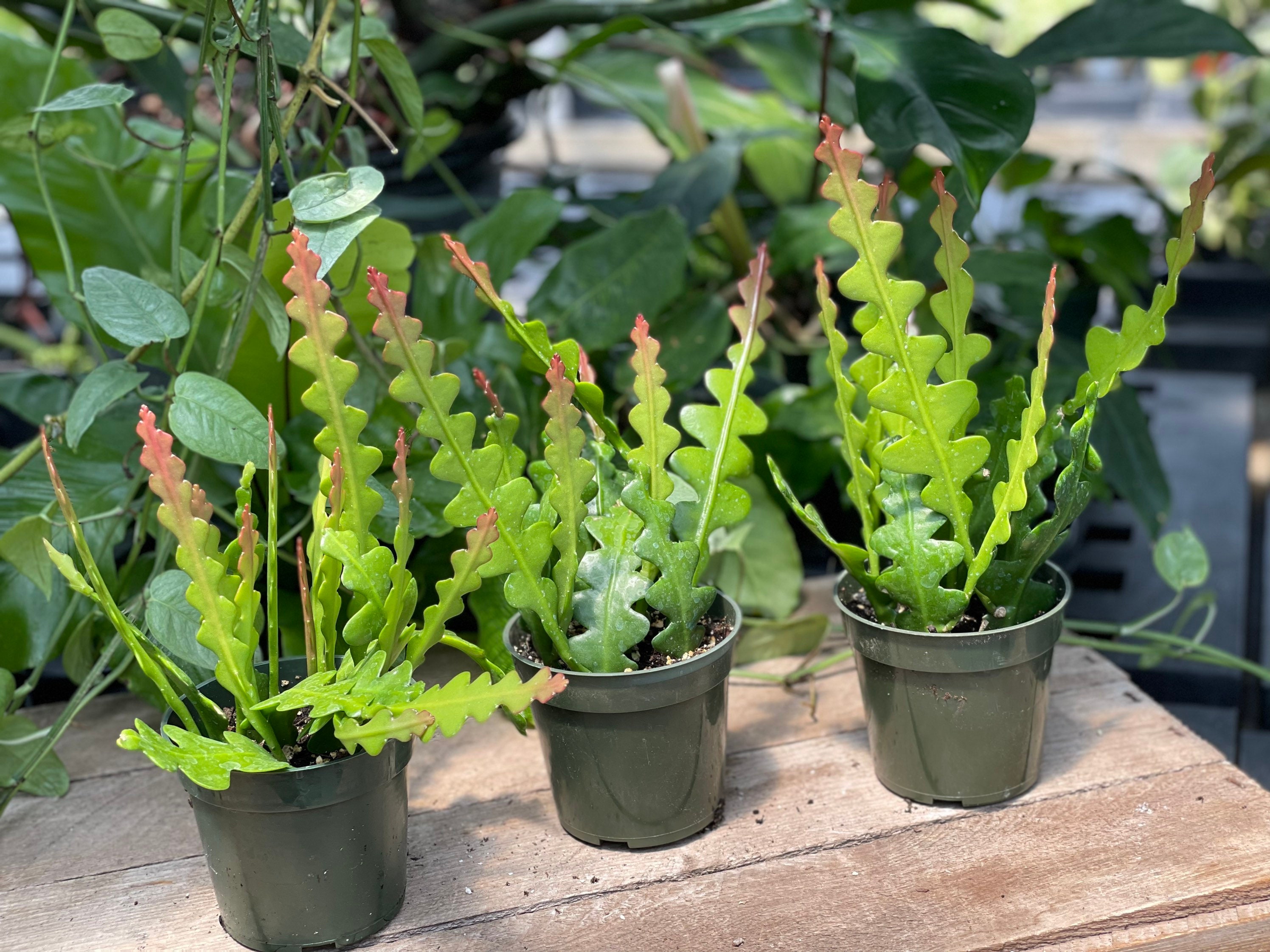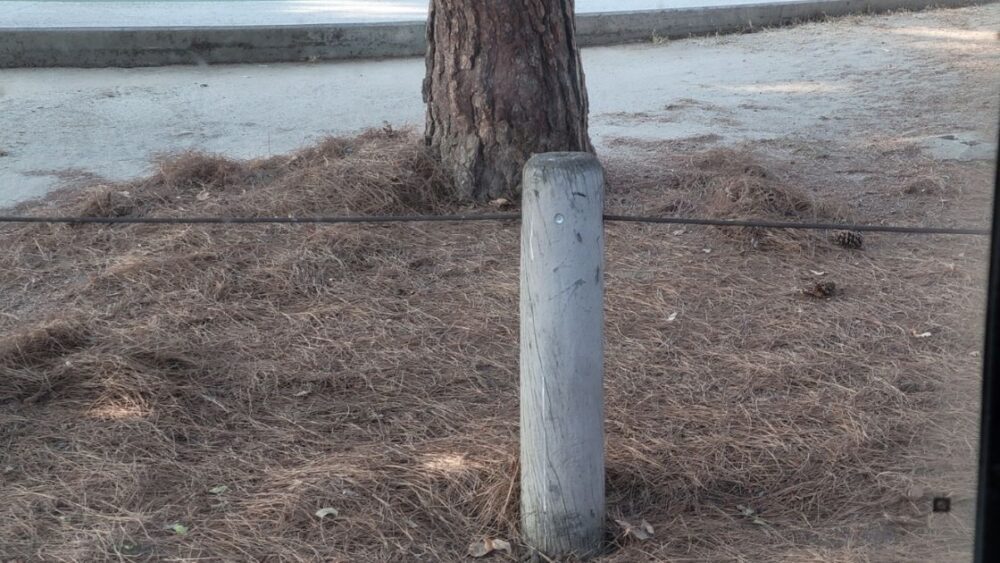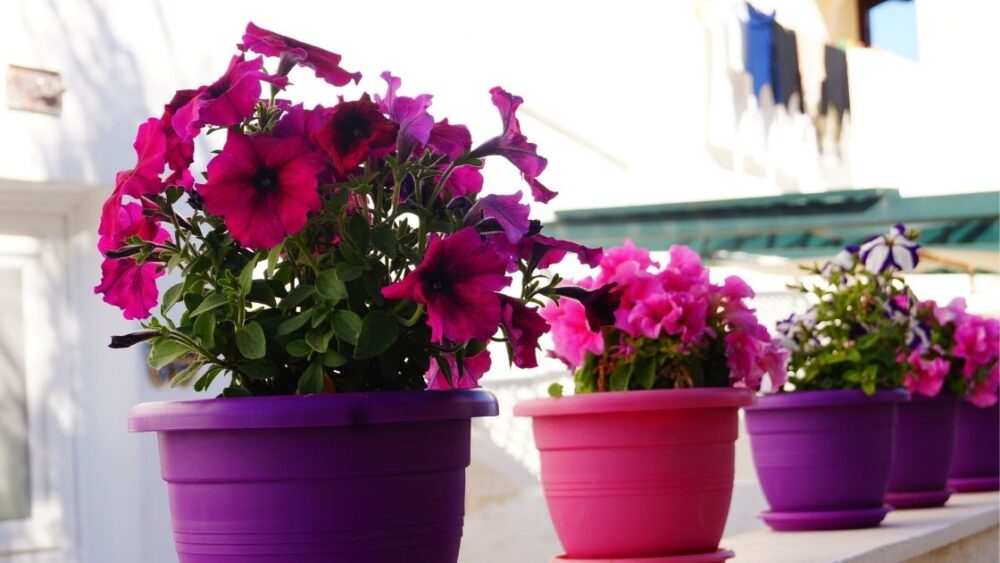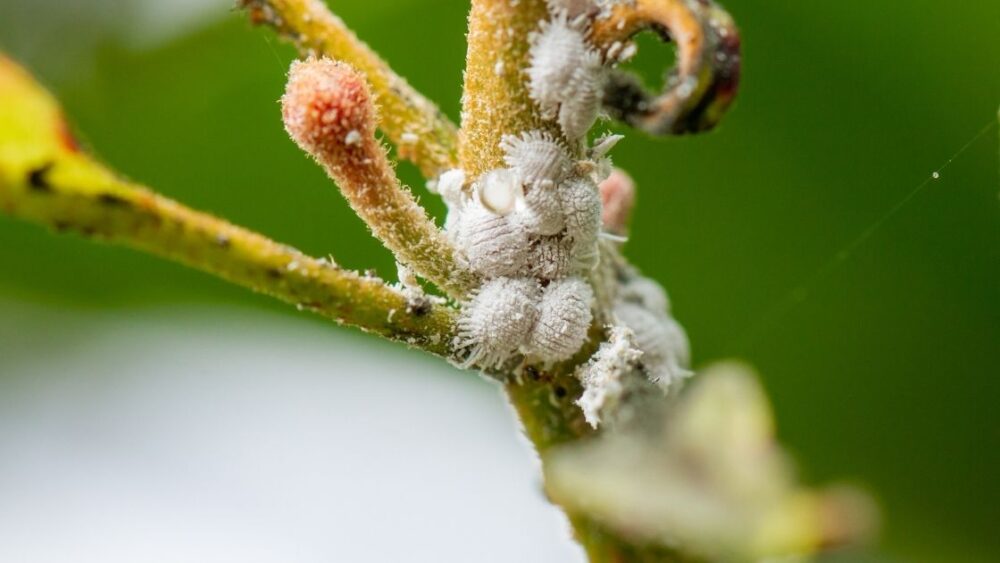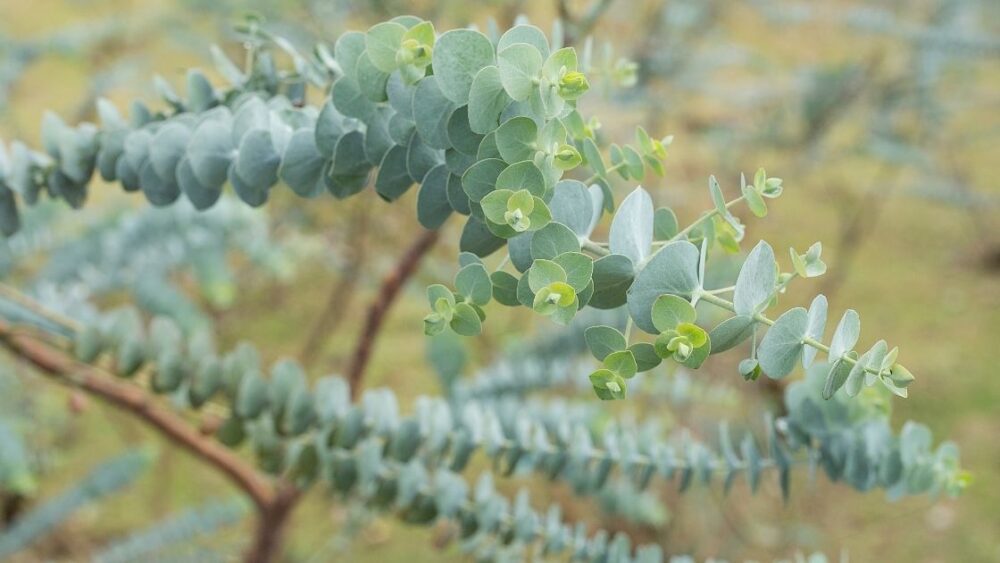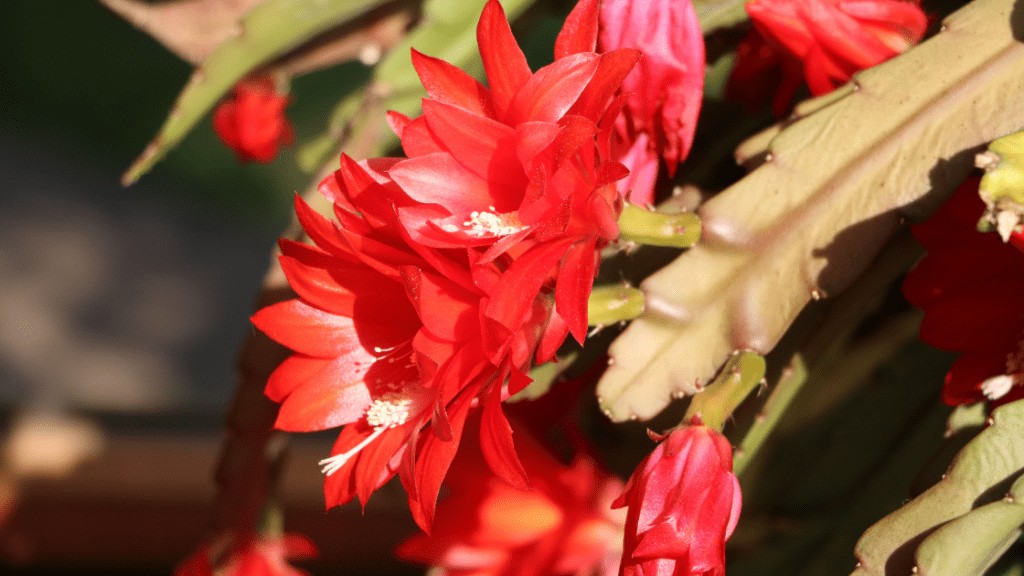
With its thick, zigzag-shaped leaves, the fishbone cactus (Epiphyllum/Disocactus Anguliger or Selenicereus Anthonyanus) is one of the more interesting succulents that can be grown indoors.
It’s fast growing and a small cutting can completely overtake a potting container in one to three years. This cactus produces one of the most attractive and interesting-looking flowers, but like most succulents it can be difficult to make it bloom and the flowers will only last a day. In this article, we’ll take a closer look at the growth requirements of this cactus, how to propagate it and will go over some of the possible problems you may encounter and their solutions. Let’s get started!
Description, Native Habitat & Common Names
Interestingly, there are at least three separate fishbone succulent species that look almost identical and can be easily confused.
Browse our Affiliate Products
They are Weberocereus Imitans, Selenicereus Anthonyanus and Epiphyllum Anguliger. The last two in particular can be very difficult to distinguish and are both commonly referred to as a ‘Fishbone Cactus’.
Selenicereus Anthonyanus however, tolerates full sun much better than Epiphyllum Anguliger. Epiphyllum Anguliger has a new name – Disocactus Anguliger, but many publications still use its old name.
Although the two fishbone cactus species have a different name, they are similar enough that there are cross-hybrids between the two, making identification even more difficult. Still, their growth requirements are similar enough and accurate identification is not necessary for most indoor gardeners.
Fishbone Cacti Common Names
Epiphyllum Anguliger is usually just referred to as a ‘fishbone cactus’ or a ‘zigzag cactus’, but the Selenicereus species are called a ‘fishbone orchid cactus’ or ‘ric rac orchid cactus’.
However, as we already discussed, the two species are often confused and are both usually just called a ‘fishbone cactus’.
Origin And Native Habitat
Fishbone succulents are endemic to Mexico, which means they aren’t found anywhere else in the world.
- The sun-loving Selenicereus species comes from the southern part of the country and grows in elevations less than 1,500 ft. at higher temperatures.
- While the shade-loving Epiphyllum is found in many parts of the country which grows in higher elevations above 3,000 ft. at lower temperature.
This is the main difference between the two species and is the reason why one is much less heat-tolerant than the other.
How Big Do Fishbone Cacti Get?
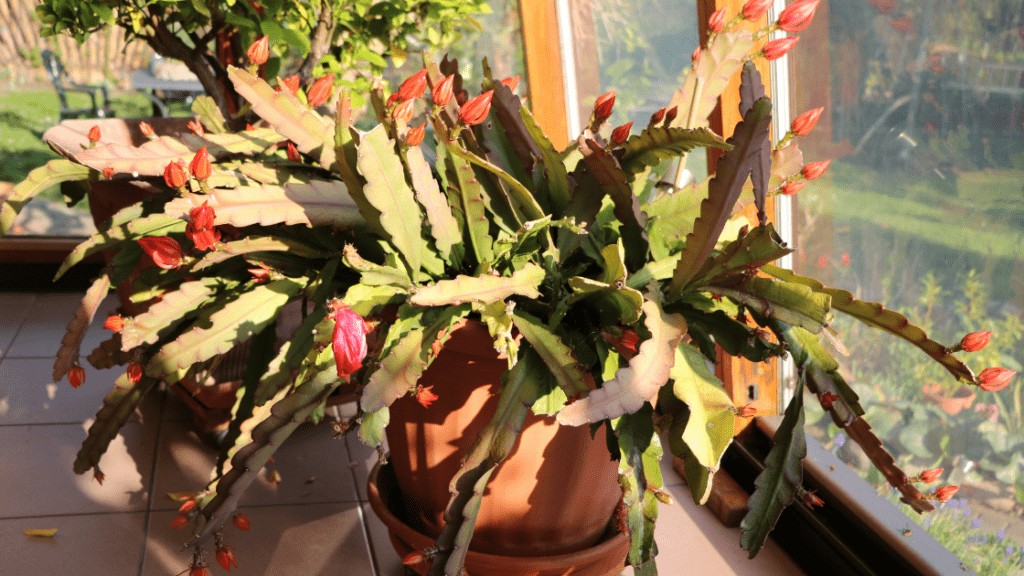
This succulent has long leaves that reach around a foot in length. When the leaves start becoming this long they usually start falling downwards and the plant becomes suitable for hanging pots.
Care, Growth Requirements and Propagation
Fishbone succulents are easy to care for and are easily propagated via leaf cuttings.
Their growth requirements are very similar to those of other succulents, with one exception – they require more frequent watering and are more sensitive to heat. They also grow relatively quickly and may require repotting every 1 to 3 years.
Does It Grow Better Indoors or Outdoors?
The fishbone cactus is not hardy at all and should not be exposed to temperatures lower than around 40F (4C).
However, it can usually survive winters outdoors in USDA zones 9 and above.
Apart from being cold-sensitive, the succulent is also heat-sensitive and if placed outdoors during the summer, it should be given some protection from overheating. Natural partial shade works best, or a shade cloth may be placed above the pot.
How Much Sun Does It Like?
Although all fishbone succulents like bright sun, the Disocactus species grow at a much high elevation in their natural habitat and don’t tolerate high heat.
Because of the difficulty in identifying the exact species and because some cross-bred varieties between Disocactus and Selenicereus exist, the general recommendation is to give the fishbone cactus bright, but indirect light.
If the plant is stressed by the heat of the full sun it may start showing signs of sun damage – brown spots and wilting. The succulent may be acclimatized to the full sun by gradual exposure, but this may take a long time.
Great YouTube video explaining what is talked about here.
What Type Of Soil Is Required?
Unlike most other succulents, this one loves moist soils – many general purpose cactus potting mixes offer too little water retention to be suitable.
This can be corrected by adding some peat or perlite to the cactus potting mix. Fishbone cactuses are also fast-growing, which is why they require repotting from time to time to replenish the soil nutrients.
For more information on soil, check out this article. What Are The BEST Potting Soils for Every Type of Plant?
Is Feeding Recommended?
Being a fast-growing succulent, the fishbone cactus does benefit from regular fertilization. Water soluble cactus fertilizers work best, but orchid fertilizers may also be used.
General-purpose, cheap plant fertilizers also work, but they should be used in a low concentration and care should be taken to select a fertilizer which contains micro-nutrients.
As with all potted plants, you should alternate fertilizer with plain water to prevent buildup of salts in the soil. The succulent should be fertilized from the beginning of spring up until the end of summer.
How Often Should It Be Watered?
Not only does the fishbone cactus require regular watering, it even benefits from some light misting.
The actual watering frequency is very dependent on the size of the pot, the type of soil and the size of the succulent compared to the volume of the pot.
It’s best to water shortly after the top layer of the soil has gone almost dry, but not completely dry. Look for any wilting, shrinking or brown spots which signal dehydration. Plants placed outdoors during the summer are especially sensitive to under-watering, especially if they are planted in a small pot.
Is Repotting Necessary and When Should You Do It?
The fishbone cactus is a fast-growing succulent that should ideally be repotted every year.
This is best done during spring. Every time you repot, a significant amount of old soil should be carefully removed from the roots to make sure that enough new, rich soil is being added. Usually, a larger pot is required for each repotting – about an inch larger than the old one. As to which pot to use, continue reading here, What is the perfect pot for my plants?
Propagation
The fishbone cactus is one of the easiest succulents to propagate. Any method of rooting a cutting will work and the cutting may even be rooted in plain tap water in a glass.
Because this succulent produces such a large amount of long leaves which can be divided into sections, it’s very easy to take more than a dozen cuttings from a single mature plant. The cuttings root relatively quickly, in only a few weeks and with some luck a small cutting can grow into a full, mature plant in only a year or two.
Cuttings not placed in water may dry out quickly, so if you prefer to root them straight into soil, you may want to use a humidity dome or provide some misting.
When Does The Fishbone Cactus Bloom And Can You Force It To?
The fishbone cactus doesn’t commonly flower when growing indoors.
For blooming to occur,
- The plant has to accumulate a lot of excess nutrients, which requires high light intensities for ample photosynthesis. And since it’s difficult to acclimatize shade-loving fishbone succulents to the full sun, the plant is typically grown in somewhat light-deficient conditions, which ultimately prevents flowering.
- Using artificial LED lights to provide a high light intensity without the heating infrared radiation of the sun is a good way to ensure good flowering conditions. This succulent flowers during autumn, as the temperatures drop and daylight duration decreases.
What Should You Do If The Cactus Blooms?
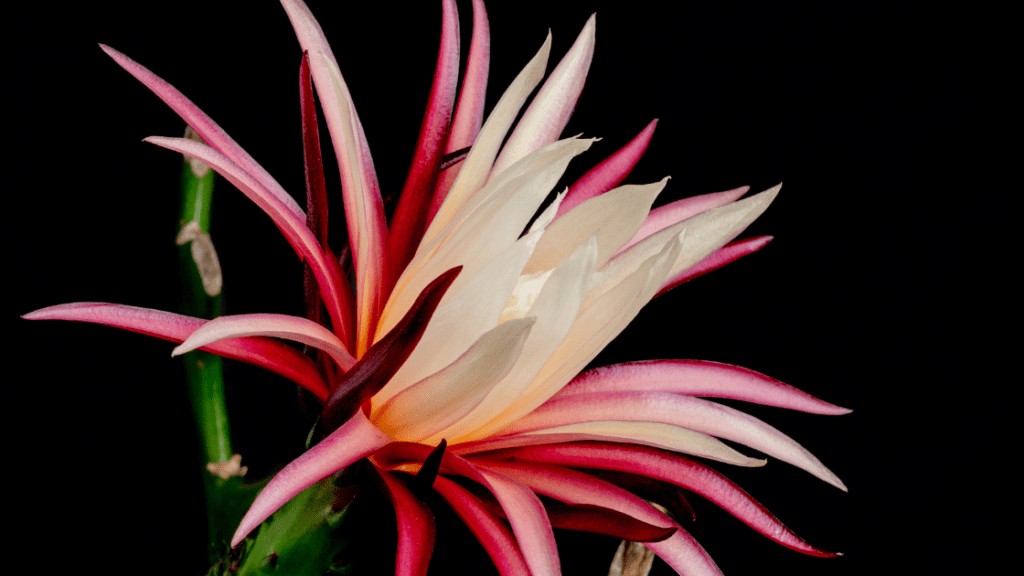
If your fishbone succulent blooms unexpectedly, this usually means you’ve provided the plant with exceptional growing conditions.
The flowers of this succulent last a very short time and if pollinated will eventually form a pitaya-looking fruit.
However, this does take some time and high light intensities to provide the necessary energy. For most people, it’s not practical to wait for fruit production, so the flowers are usually removed when they start to die (deadheading).
Common Problems You May Encounter
The fishbone cactus isn’t prone to problems and is not demanding. Most of the problems you are likely to encounter will be a result of not meeting its basic growth requirements, such as frequent watering and a high light intensity.
Dehydration and Heat Stress
Not watering enough results in the easy to detect and diagnose symptoms of general dehydration – the leaves will start to wrinkle and shrink and the whole plant will wilt.
Heat stress and sunburn however, may be more difficult to diagnose and usually present with brown spots on the leaves.
- If those spots develop shortly after placing the succulent in direct sunlight, you should provide some shading.
Plants that have been growing indoors for a long time may not be ready to face the outdoors ,
- their roots may not be developed enough to keep up with the water demand of the leaves. You can slowly acclimatize the succulent to the harsher outdoor summer conditions by gradual exposure.
Pests
Fishbone cactuses aren’t particularly vulnerable to pests, but occasionally they may get infested with mealybugs. Those tiny bugs create white cotton-like formations on the edges of the leaves.
It’s important to notice the problem as early as possible – the longer you wait, the harder it is to get rid of mealybugs, because they secrete a waxy covering in which they wrap themselves up, making pesticides difficult to penetrate. Fortunately, the fishbone cactus has easily-accessible leaves that can be washed off with soapy water in order to kill the insects.
For more information on Cacti and mealy bugs check out our article, Why Does My Cactus Have White Fuzz? Problems, Causes and Solutions
Poor Growth
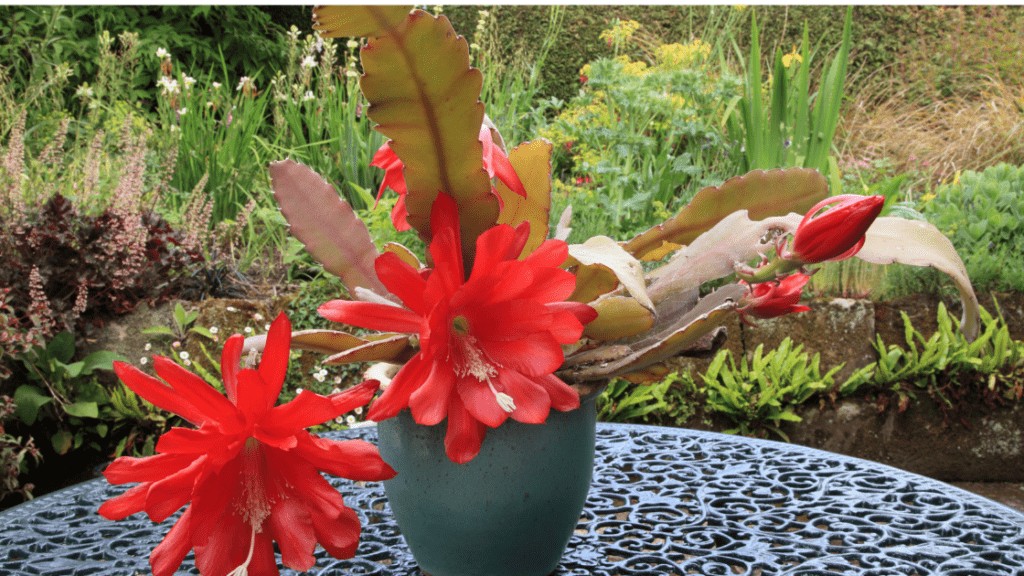
General poor and slow growth usually comes from insufficient light. This succulent will not grow at any noticeable rate when placed in the corner of a living room – indoors, it requires a windowsill or a closely-positioned LED light.
Insufficient light will also make the plant lose some of its green coloring and the leaves will become very pale. The only other common issue which leads to similar symptoms is a lack of nutrition, which can be fixed by fertilization or by repotting.
Final Thoughts
Fishbone cactuses are easy to care for and are extremely easy to propagate. Because of their relatively fast growth rate, they are great for impatient succulent lovers. This succulent isn’t demanding but it is unique in that it requires more frequent watering, more frequent repotting and doesn’t tolerate the full sun very well.



